Blogs
Till we meet again: Shimla Water Crisis
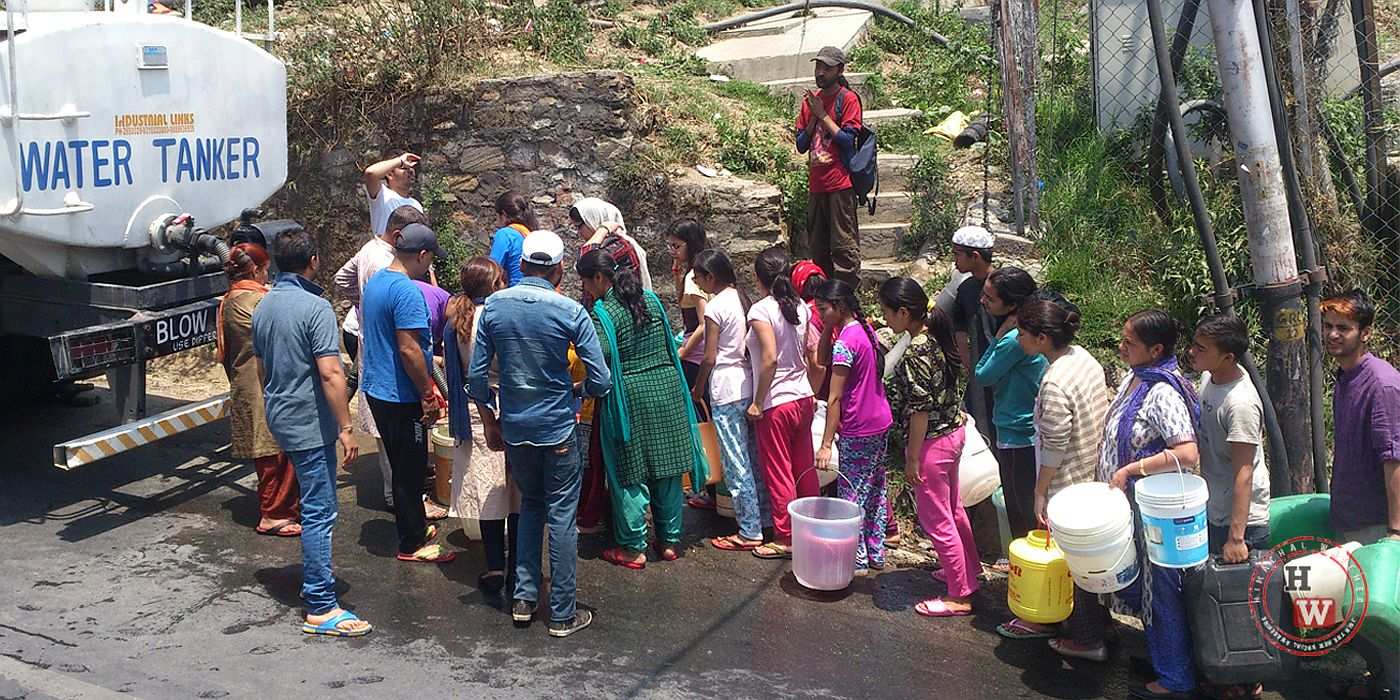
The Honourable Supreme Court in its conclusion to the case Narmada Bachao Andolan Vs Union of India and others on October 18, 2000 states:
Water is the basic need for the survival of human beings and is part of the right of life and human rights as enshrined in Article 21 of the Constitution of India and can be served only by providing a source of water where there is none.
At the time of writing this article, the water crisis in Shimla is effectively over but the fault lines have already been drawn. The crisis placed the beautiful town of Shimla in the global spotlight for all the ugly reasons and highlighted the fissures in this fragile place.
Every source of media whether Indian or Western underscored the problem and compared it to the Cape Town Water crisis. A few went a step further and used the words such as “Day Zero” or “Water Wars” in respect of Shimla without exactly understanding the gravity of the situation and the message the words carry.
Day Zero is when in any town or city the authorities shut off the water supply except hospitals and other vital institution with the majority of residents lining up at water check-points for their daily supply.
Water wars need no introduction except that it takes place between the haves and the have-nots.
All this was done without giving a thought to one’s social responsibility as a citizen or a source of information no matter authentic or apocryphal.
Shimla & Cape Town
Shimla is no Cape Town; it will have to walk several hundred miles to become something even remotely close to it. Cape Town had suffered three years of unprecedented drought, which depleted its water reservoirs supplying water to the city. Due to this, the city had advised its residents to prepare themselves for the purported Day Zero, the year being 2018.
However, before that Cape Town had already embarked on the path for conservation in the year 2007 and had prepared Water Conservation and Water Demand Management Strategy (WC/WDM).
If there existed any prescience in a city in a third world country, then it was Cape Town. Before the introduction of the programme, the water consumption in the city was growing at the rate of 4.7% per annum.
But through its excellent management strategies and innovation Cape Town was able to reduce water consumption growth at a rate of less than 2% per annum. It resulted in a reduction of water wastage by 20% and total water savings of 30% approx.).
For its sustained efforts and successful conservation, Cape Town won first prize for Adaption & Implementation in C40 Cities Award 2015 beating 91 cities including Copenhagen and Paris.
The city did not encourage the tourists to stay away- rather it launched “Save Like a Local Campaign” requesting tourists to keep their water usage to under 87 liters per day, the same restrictions placed on residents. In Cape Town, the Mayor can anytime come knocking at your door to check the water management.
In this city only, the top 100 water user streets were publicised. Water tariffs were structured to cater to poor households. And our intentions are to see ourselves at par with this city, a city that even in times of distress has maintained its dignity.
South Eastern Queensland
Entire Australia suffered drought in the 2000s due to climatic disturbances with South East Queensland being the major casualty. During the beginning of the drought, the per person usage of the Queenslanders was 300 liters per person per day for washing, eating, drinking, and gardening.
Come the year 2015, it was reduced to 169 liters per person per day. Even before the worst phase of drought began in the year 2007, the outdoor water-related restrictions were already in place since 2005.
It was then, that the Queensland Water Commission launched the Target 140 campaign. The campaign emphasized voluntary residential indoor water saving practices, behaviors and attitudes.
The campaign was a success since it achieved a permanent behavioral and attitudinal change. Over a sustained period of eight months of the campaign, the average daily water consumption dropped from 179 liters to 126 liters per person per day.
This change effectively resulted in savings of 20,680 million liters of water.
Shimla
Life is always full of options, and one such option is “Fight or Flight” and we the people of Shimla choose the flight option when we requested tourists to skip Shimla this summer.
This might have worked for now with tourists staying away from Shimla but this may not work every time. And it will be not long before we realize that such exhortations will strip Shimla of its Soul first and silver later.
We the people of Shimla take pride by seeing ourselves in one of the richest and educated towns in the country. But it is high time, we realize that the next summer is only 300 days away and this crisis is not to be wasted.
We need to learn, how other cities of the world managed to come out of such crises and set examples for the whole world to see. It needs to be ensured that the crisis is not given a rerun the next summer but it will involve drudgery (being primal) on the part of everyone living in Shimla or loving Shimla.
Initially, on the macro level, we need to focus on both the supply side as well as the demand side. First, we should begin with the cheaper solutions i.e. the demand side solutions. The stakeholders in this being residents, hotels, tourists and it can be done by a change in our attitudes. Our behavior and attitudes should reflect the water saving practices which over a period of time become the norm for us.
Incentivising water saving would be the step to go forward on the similar lines of Carbon credits, how about Blue credits. Next would be the supply side solutions, i.e. the costly ones, augmenting the resources catering to Shimla, be it the upcoming Government Schemes or the existing supply schemes.
The city under all circumstances should be prepared for the worst day if it so ever comes.
On a micro level, the dead water or zero revenue water should be reduced, which would effectively mean overhauling the supply systems, so that there are no leakages.
Equipping our buildings with rainwater harvesting systems and similarly incentivising this practice would also go a long way in recharging the groundwater.
Meanwhile, improving the city drainage system would mean that outpouring does not end up in the city sewers. Replacement of the old and antiquated water meters, so that the profligate users are identified and brought to justice.
Taking of Shimla from grey to green by increasing its greenery would ensure that we do not give into concrete. The publishing of Water Report every year, before the onset of summer, outlining water availability in the upcoming months, would ensure that all the stakeholders are made aware in advance of the upcoming water situation.
And all this would begin with a realization of our rights, of our authority and an adage, which goes by Of the People, By the People, For the People, always in the back of our mind.
Water scarcity is here to stay and if there is any chance, it is going to go northwards only.
By Maneet, Shimla
Disclaimer: Himachal Watcher may not share the same views and opinions as expressed by the author in this article.
Blogs
Shimla City – Private Bus Operators Seen Creating Nuisance by Blocking Road

Shimla-In yet another instance, two private bus operators in Shimla city were seen creating a nuisance for the public by jamming the traffic. A reader clicked some pictures at the BCS bust stop in Shimla city on February 19, 2022, at about 8 PM and shared them with us. The reader alleged that two private bus operators, namely ‘Komal’ and ‘Chadda’, indulged in a verbal spat, most probably over their schedule. While the drivers argued, one of the buses remained parked in the middle of the road, choking the traffic. The staff of these two buses indulged in a verbal spat for about 5-10 minutes during which the general public faced a huge inconvenience. The reader has requested the Traffic Police Shimla to take action against such operators and discourage them from adopting such a bullying attitude that they don’t even hesitate to block the entire road.
Write and Publish Blog on HW
If you have relevant issues/complains that you want the people and the government to see and read about, you can publish blogs on Himachal Watcher. Send us your blogs with pictures/videos at editor [at] himachalwatcher [dot]com
Language: Hindi and English
Note For Multimedia Files: If you have high resolution images/videos (taken with smartphone/camera), then send us the originals through Google Drive or We Transfer or any other file sharing applications that suits you.
Blogs
Littering – A Grave Threat to Sundernagar Lake and Its Aquatic Life
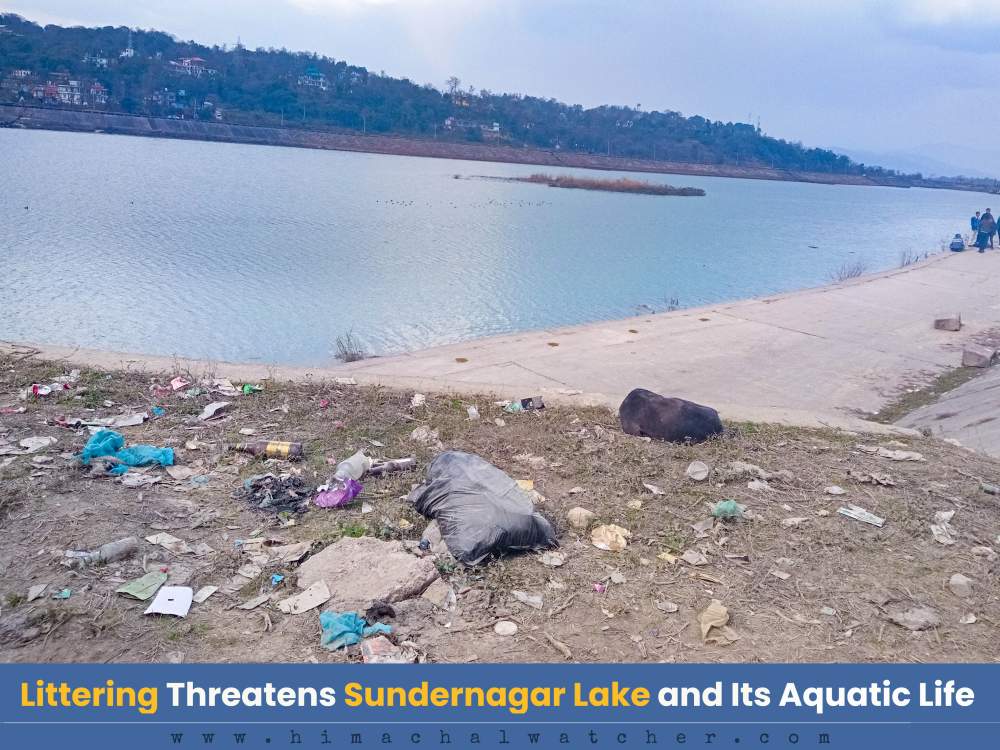
Sundernagar-Many people visit the Sundernagar lake in Mandi district and litter along the road. Winds carry all those packets and plastic bottles into the lake. This practice of littering is unlawful because it costs millions in clean-up projects. It portrays a bad picture of an area. Littering is a huge threat to the aquatic life too. In my view, the solution is awareness, responsibility, sensibility and concern for nature. We as a society need to play a big role. At least, dustbins should be installed along the lake. Otherwise, the negligence in the present will affect us in near future.
-Blog and Picture By Divya Acharya, Sundernagar
Write and Publish Blog on HW
If you have relevant issues/complains that you want the people and the government to see and read about, you can publish blogs on Himachal Watcher. Send us your blogs with pictures/videos at editor [at] himachalwatcher [dot]com
Language: Hindi and English
Note For Multimedia Files: If you have high resolution images/videos (taken with smartphone/camera), then send us the originals through Google Drive or We Transfer or any other file sharing applications that suits you.
Blogs
Shimla-Based IT Start-Up Scaling Global Market in Short Span of Time
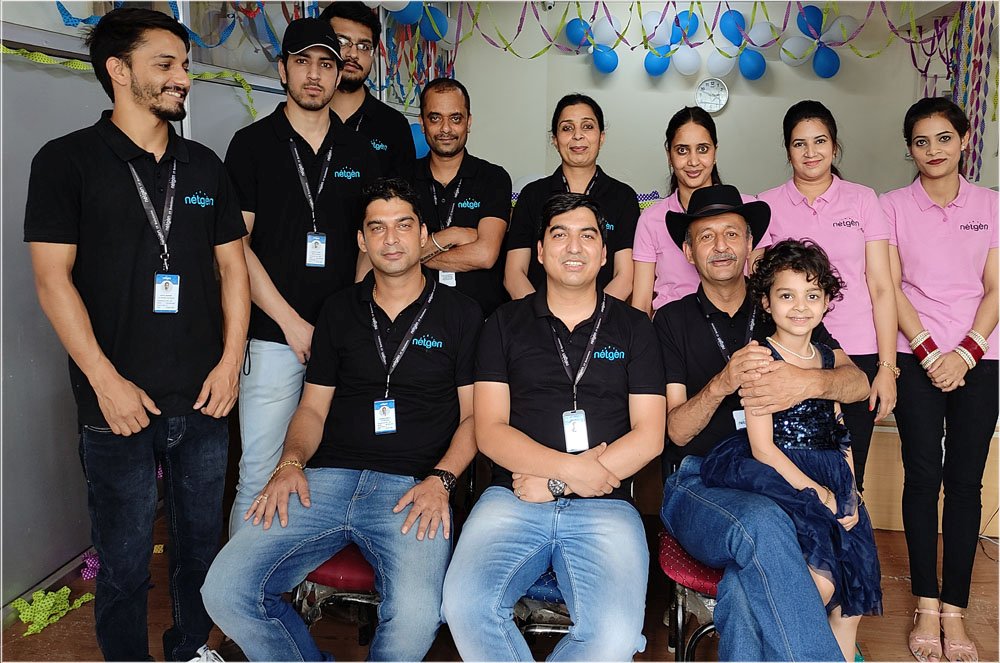
Shimla-A youth from a small town of the Mandi district – Sarkaghat- started as a freelancer and went on to launch his own start-up in 2014. By 2021, the start-up grew into a company that has garnered international clients and also designed and developed websites and web apps for several Departments of the Himachal Pradesh Government.
Netgen IT Solutions Pvt Ltd- a young agile company- has, so far, developed websites for the Department of Information Technology, Women & Child Development, Rope & Rapid Transport Development Corporation, HP Milk Federation Cooperation, and the HP AIDS Control Society.
Besides, it also developed HimSuraksha Abhiyan App (National Health Mission) and the website of the Department of Tourism & Civil Aviation along with a Services Portal.
Further, the website of the Department of Information & Public Relations and the single window system was also developed by NetGen.
Having developed over 2500 websites, Netgen IT Solutions has an imprint of having worked for clients spread over 25 countries in Europe, America, Asia and Australia.
Bootstrapped as a Start-Up on 7th July 2014, the company has evolved to offer a diverse set of services for web, e-commerce and mobile solutions that have enabled Global and Indian business to adapt to a Digital First environment. In seven years, this Shimla-based company has carved out a niche for itself.
The company started with a small team of just four people, and today it employs strong-heeled 25 IT professionals. The skillset of web developers, designers, networking specialists, social media marketers and others is expanding with the growth of the company.
To mark the NetGen Foundation Day, the company hosted a live inter-action of the team members with some clients to understand the need for future technologies and solutions for a fast-changing business environment in the shadow COVID pandemic.
Mr Rajneesh Rana, Founder and Managing Director of the company, is a computer science graduate. Speaking about the company’s journey, Rana’s says, “Stepping out from working as a freelancer at the small township of Sarkhaghat, in Himachal Pradesh, to launching a start-up company, was my first step in entrepreneurship. The company was founded on a shoe-string budget with a small capital outlay. After overcoming the initial hesitancy, we’re on the firmer ground today.”
With the growth in demand for IT Services, the company in the initial year faced manpower shortages. The management took to train and equip freshers in a mentorship program to meet its needs for IT Professionals and also to equip others to find gainful employment elsewhere. Netgen till date has trained over 50 freshers with essential and advanced IT skills. Most of them for the first time in their careers got exposure to the IT Industry.
The company’s IT Technical Team today is professionally equipped to work in 20+ technologies that can be deployed across a vast network of industries.
The Netgen team of IT professionals has expanded the services that the company now provides. A multitude of projects employing creative website design-development; customised software products; e-Commerce solutions; server administration – web security – networking services; mobile application design – development; social media marketing; stand completed.
“There is a growing demand for many other IT and IT-enabled services that the company has successfully delivered for Global and Indian clients,” said Rajneesh.
“Since the breakout of the COVID pandemic, the demand for online services has increased. It created an environment that demands moving things onto digital platform, bringing more opportunities for the IT sector ,” added Rajneesh.
“Take the case of the Government of Himachal Pradesh, India. To secure baseline health data of the over 70 lakh residents in the state and to prepare effective strategies for countering the spread of the pandemic in challenging hilly terrain, the state government needed a simple but effective IT-enabled solution to capture the data as fast as possible,” he said.
“The ‘Him Suraksha Abhiyan’ application designed and developed by NetGen IT Solutions was used by thousands of teams spread under 2300+ sub-centres. In just over a month, the software solution created successfully captured the data of over 68 lakh residents of Himachal Pradesh,” he added.
The 70:30 Percent (%) Global – Domestic revenue stream of Netgen has prepared the company to expand both its export and domestic service portfolios, said Rajneesh.
Mr Ravinder Makhaik, Director of the company says, “growing steadily, Netgen is a debt-free, profit-making company. A healthy mix of domestic and international businesses, with sound financials, gives the company strength to take up more challenging projects. Our portfolio of government projects is making good progress.”
Founded as a 1 lakh authorized capital company and with annual revenues rising at a 25 % compounded annual growth rate, the Netgen Board of Directors has decided to expand the authorized capital of the company to Rs 10 lakh to meet future growth needs.


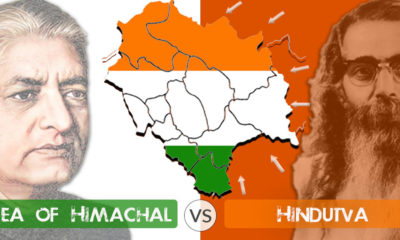

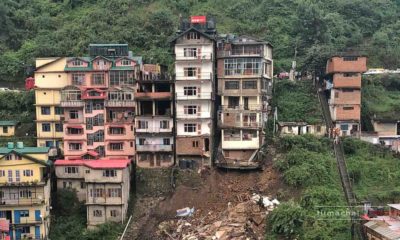









 Home Decor Ideas 2020
Home Decor Ideas 2020
